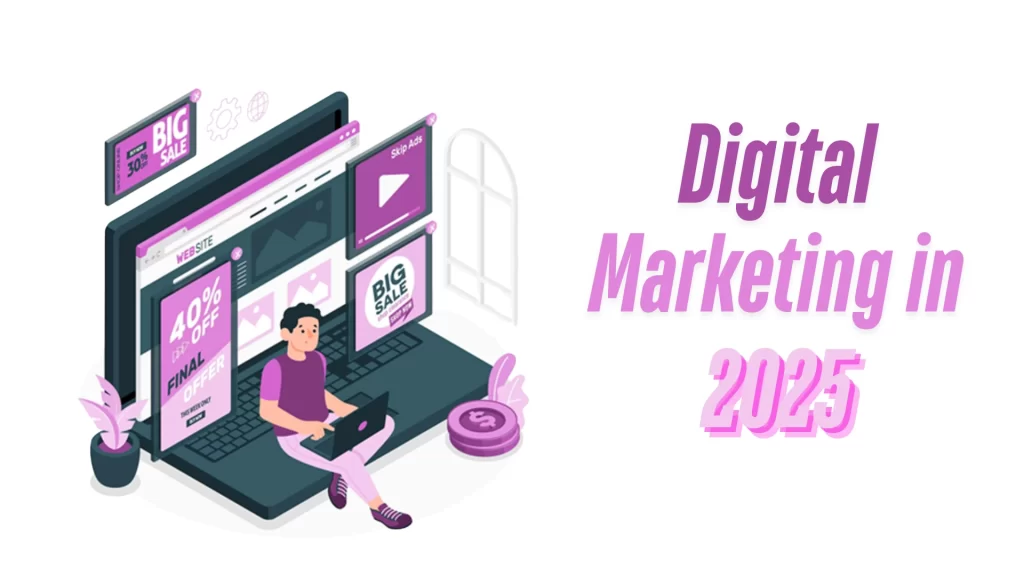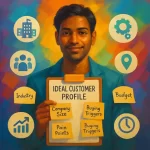The Harsh Reality of Digital Advertising for D2C Brands
Digital Advertising is supposed to help D2C brands grow, but for many, it’s just burning cash with little to no return. Business owners invest in social media marketing, Google Ads, and other digital marketing services, expecting quick results. Instead, they see rising Google ad costs, poor engagement rates, and low conversion rates.
The problem isn’t just spending money; it’s the lack of a clear strategy. Many brands trust marketing ads without understanding how targeting, multi-channel campaigns, and ad creatives work together. Without these, they’re left with empty clicks and no real sales.
As the digital advertising landscape evolves, brands that fail to adapt will continue losing money, while those who leverage smarter, AI-powered ad strategies will thrive.

Why Your Ads Aren’t Reaching the Right Audience
One of the biggest mistakes businesses make in digital advertising is assuming that just running ads will bring in customers. They see high impressions, increased website traffic, and growing social media followers and think their campaigns are successful. But none of these numbers mean anything if they don’t lead to actual sales and business growth.
a.) Vanity Metrics Don’t Equal Sales
Many brands think their ads are working just because they see:
- High impressions – but no conversions.
- More website traffic – but no purchases.
- Increased social media followers – but no customer loyalty.
This is where most digital ads fail. Platforms push businesses to chase click-through rates (CTR) and engagement rates, but these numbers don’t always lead to revenue. If an ad campaign isn’t designed for real business outcomes, like sales, repeat customers, and brand loyalty, it’s just a waste of resources.
D2C brands need more than just ads on Facebook or Google; they need a holistic advertising strategy that ensures visibility on platforms where real customers are engaging, be it OTT, CTV, or premium streaming platforms.
b.) Poor Audience Targeting: Reaching the Wrong People
Most brands assume digital advertising, like social media ads and Google Ads, automatically find their ideal customers. But if the targeting isn’t precise, businesses end up paying for clicks from people who will never buy.
Without advanced audience targeting, brands waste their budget on:
- Random impressions that don’t convert.
- Clicks from audiences who have no intent to purchase.
- Generic ad creatives that don’t speak to the right customer.
Successful advertising goes beyond basic demographic targeting. It requires AI-driven insights to reach the right users at the right time, whether through hyperlocal geographic precision, interest-based ads, or non-mute ad placements. Without this, businesses continue losing money on budget ads that don’t generate revenue.
c.) One-Size-Fits-All Advertising Doesn’t Work
Many brands use the same ad creatives across all platforms, thinking a single design will work everywhere. But consumer behavior differs across channels.
- Social media ads (Instagram, Facebook) require short, visually engaging videos.
- OTT ads & CTV ads need immersive storytelling to retain attention.
- Audio ads on streaming platforms reach a different audience entirely.
Ignoring multi-channel advertising limits a brand’s ability to engage customers effectively. The brands that succeed are those leveraging diverse media platforms; adapting their creatives for video, display, OTT, and CTV, ensuring their message reaches the right audience at the right time.
d.) The High Cost of Trial and Error
D2C brands often spend months (and lakhs of rupees) testing different marketing ads, trying to figure out what works. The cost of wrong ad strategies, poor audience selection, and underperforming landing pages adds up quickly.
For brands relying solely on a marketing agency or ad platforms with limited control, this cycle continues:
- Budget ads fail, leading to more ad spend.
- No real-time insights, making optimization difficult.
- Campaigns run inefficiently, with no clear ROI.
Without a smart, data-driven approach to digital advertising, brands will continue to:
- Lose money on inefficient campaigns.
- Struggle to measure actual business growth.
- Fall behind competitors using AI-driven ad strategies.
This is why advertising success today isn’t just about running ads, it’s about using advanced targeting, premium inventory, and multi-channel access to maximize ROI.
The Creative’s Problem – One Ad Format Doesn’t Fit All
Many businesses make the mistake of repurposing the same ad across all platforms, assuming that what works on Facebook will also work on YouTube, Instagram, or OTT. This approach kills engagement and reduces conversions because different platforms require different ad formats to capture audience attention effectively.
Why One-Size-Fits-All Digital Advertising Fails:
- Social media ads: – Require short-form videos and high-engagement visuals to stop users from scrolling past. A simple banner ad won’t work on Instagram the same way it might on a website.
- Audio ads on podcasts & streaming services: People consuming audio content aren’t seeing visuals. If an ad relies only on images, it will be ineffective in an environment where storytelling matters.
- Interactive ads for CTV & OTT: Viewers on streaming platforms engage differently than those on mobile. Traditional static ads won’t drive conversions in an immersive video experience.
When businesses fail to customize their ad creatives for each platform, they end up with high ad spend but poor engagement. The brands that succeed are those that use AI-powered tools to quickly generate tailored ad creatives for multiple formats, ensuring their message resonates across different digital touchpoints.
Without platform-specific ad optimization, businesses will continue losing money on poorly performing campaigns, struggling to break through the noise in an overcrowded digital landscape.
The Death of Cookies & What It Means for Digital Advertising
For years, businesses have relied on third-party cookies to track users and retarget them with ads. But with Google and Apple phasing out third-party cookies, traditional methods of audience tracking and retargeting are becoming obsolete.
Why This is a Problem for Businesses:
- Retargeting will no longer work the same way: Businesses that depend on website visitor tracking to show ads across platforms will lose a crucial part of their ad strategy.
- Less data means weaker ad targeting: With less ability to track users across sites, businesses will struggle to refine their audience and optimize marketing strategies effectively.
- Higher customer acquisition costs: As traditional retargeting weakens, brands will have to spend more on ads to reach new audiences, leading to higher Google ad costs and budget ads failing to deliver expected results.
The future of digital marketing ads lies in first-party data and AI-driven insights. Instead of relying on cookies, brands must focus on programmatic advertising, leveraging real-time audience engagement, contextual data, and direct targeting methods to reach the right consumers.
Businesses that fail to adapt to this shift will struggle to measure their ad performance, while those using advanced advertising solutions will stay ahead, continuing to drive conversions without reliance on outdated tracking methods.
Data Overload, No Action – The Reporting Nightmare
One of the biggest challenges in digital advertising isn’t just running ads; it’s knowing if they actually work. Businesses are bombarded with metrics from ad platforms, marketing agencies, and analytics dashboards, yet many struggle to turn this data into meaningful action.
Why Data Becomes a Problem Instead of a Solution:
- Endless Metrics, No Clear Direction: CPC, CPM, CTR, ROAS… without context, these numbers don’t translate into business growth.
- Delayed Optimization: Static reports and confusing dashboards slow down decision-making, leading to wasted budget.
- No Real-Time Adjustments: Brands relying on outdated reports miss opportunities to optimize campaigns on the fly.
Without real-time insights and simplified reporting, businesses will continue to spend money blindly, hoping their campaigns work rather than knowing for sure. A unified, transparent system that provides clear, actionable insights is the difference between successful advertising and wasted investment.
Why Programmatic Advertising Is the Future for Businesses
The traditional way of running digital ads: manually setting up campaigns on multiple platforms, guessing the right audience, and tweaking creatives endlessly, is outdated and inefficient. With growing competition, rising Google ad costs, and declining cookie-based tracking, businesses need a smarter way to run their ad campaigns.
This is where programmatic advertising is changing the game. Instead of manually managing multiple platforms, AI-driven automation ensures that ads are placed where they will have the highest impact: across OTT, display, audio, video, and CTV.
How Programmatic Digital Advertising Gives Businesses an Edge:
- Multi-channel reach: Advertisers can run campaigns across streaming services, mobile apps, CTV, social media, and display ads, ensuring visibility where customers are most engaged.
- AI-driven targeting and optimization: Unlike traditional ads that rely on basic demographic filters, programmatic advertising uses real-time audience behavior to refine targeting and ensure businesses only pay for valuable impressions.
- Seamless execution: Instead of manually adjusting ads every few days, smart algorithms automatically adjust placements, bid amounts, and audience segmentation to maximize ROI without constant intervention.
As businesses shift away from manual advertising toward AI-powered, automated campaign management, they will spend less time guessing and more time scaling their business with data-backed precision.
Conclusion: Stop Wasting Money on Digital Advertising That Doesn’t Work
Many businesses are spending huge amounts on digital advertising but are not getting the results they expect. They focus on the wrong numbers, target the wrong people, and struggle to understand complex reports. Without the right approach, ad budgets get wasted, and businesses see little to no growth.
Digital advertising is changing fast. Old methods are not as effective, and competition is increasing. If businesses continue using outdated strategies, they will keep losing money without real success.
To make advertising work, businesses need to reach their customers on the right platforms, use real-time insights, and optimize their campaigns with smarter technology. Instead of guessing and wasting money, they should use data-driven strategies that actually bring results.
The key to success is not just running ads; it’s running them the right way. Businesses that adapt and use better advertising solutions will grow, while those that don’t will struggle to survive.
Recommended Reading:
















